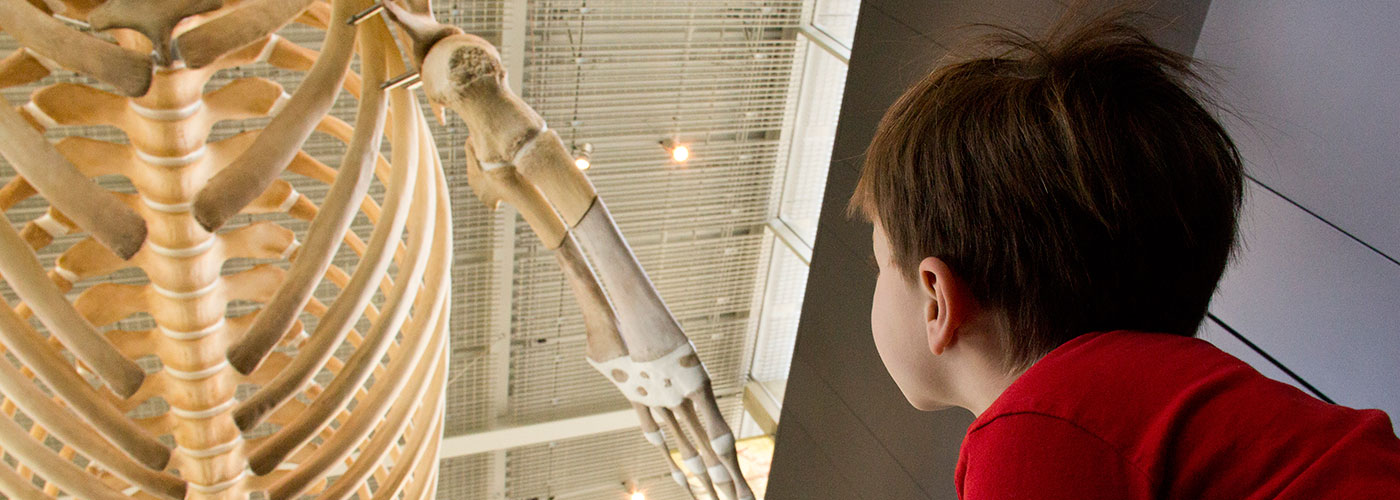| Duration | 75 minutes |
| Child, Youth, Student and Senior | $ 9.00 |
| Adult | $12.00 |
* Please see booking information for more details.
The museum is home to Canada’s largest blue whale skeleton, and is one of few places in the world where you can get close to the largest creature that has ever lived on Earth!
The Blue Whale is where we start our exploration of living things. We will dive into diversity, examining museum specimens to better understand the needs of living things, different body shapes, behaviours, life cycles, habitats, and along the way learn about ways biodiversity scientists describe and organize the world around us.

Targeted Curriculum
- Science 1: Living things have features and behaviours that help them survive in their environment
Classification of living or non-living things, structural features of living things in the local environment, behavioural adaptations of animals in the local environment.
- Science 2: All things have a life cycle
Metamorphic and non-metamorphic life cycles of different organisms
- Science 3: Living things are diverse, can be grouped, and interact in their ecosystems
Biodiversity in the local environment
- Science 4: All living things and their environment are interdependent
Features of biomes, organisms in ecosystems sense and respond to their environment
Resources
We encourage you to plan to arrive early and/or stay late after your program is finished, so you can explore the museum collections more fully. We have a wide variety of educator resources to support you before, during, and after your visit. Here are some suggested ways to frame your exploration:
Before your visit:
- Get to know our space, enjoy an audio tour or 360° virtual tour of the museum, using our online visitor guide (html) or printable visitor guide (pdf) to help navigate the museum.
- Explore our museum terminology sheet and Researchers Revealed site
- Inspire your group’s creativity with these printable whale and krill colouring sheets
At the museum:
- Look for Culture at the Centre and the Sturgeon Knowledge Web exhibits sharing First Peoples’ knowledge and perspectives on biodiversity.
- Check out the current exhibitions
After your visit:
- Create a Nature Table in your classroom
- Document the invertebrates in your classroom backyard and prepare a report of your choice!
- Head outside on a Rainbow Walk
Accessibility Notes
We will move around the museum which is equipped with level concrete flooring and ramps. There are no lips or steps to get to all program areas. Some spaces in the museum are dark and/or narrow but can fit a wheelchair easily. Expect to spend some time walking, standing, and sitting. Students may work in pairs, small groups, or as a large group. Activities may incorporate drawing or writing, touching real museum specimens, and discussions. Read more about accessibility in the museum here. We will ensure we get all group members to participate in a way that works for them. Let us know how we can meet the access needs of your group!
